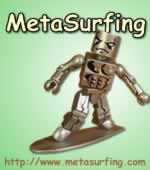Despite a 30-year lifespan that gives ample time for cells to grow cancerous, a small rodent species called a naked mole rat has never been found with tumors of any kind—and now biologists at the University of Rochester think they know why.
The findings, presented in today's issue of the Proceedings of the National Academy of Sciences, show that the mole rat's cells express a gene called p16 that makes the cells "claustrophobic," stopping the cells' proliferation when too many of them crowd together, cutting off runaway growth before it can start. The effect of p16 is so pronounced that when researchers mutated the cells to induce a tumor, the cells' growth barely changed, whereas regular mouse cells became fully cancerous.
"We think we've found the reason these mole rats don't get cancer, and it's a bit of a surprise," say Vera Gorbunova and Andrei Seluanov, professors of biology at the University of Rochester and lead investigators on the discovery. "It's very early to speculate about the implications, but if the effect of p16 can be simulated in humans we might have a way to halt cancer before it starts."
(...)
Gorbunova and Seluanov are now planning to delve deeper into the mole rat's genetics to see if their cancer resistance might be applicable to humans.
